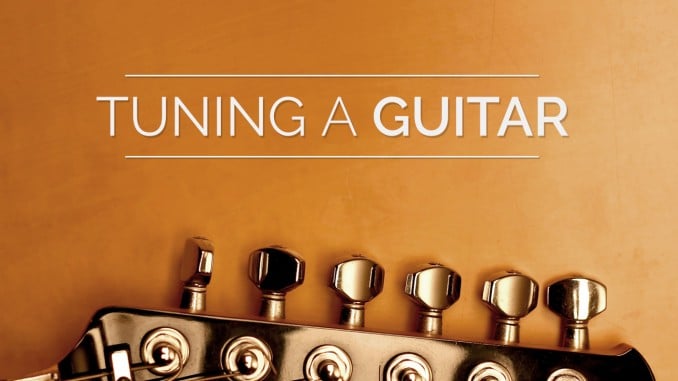
There are many ways to tune a guitar. Even if you have an electronic tuner, which I recommend, you should know how to tune a guitar without one. In this lesson, you’ll learn the most common tuning method, the fifth fret method. You’ll also learn how to use the same method to tune a 7-string guitar. Lastly, I’ll provide reference pitches so you can tune each string individually.
Fifth Fret Method
This method assumes a properly tuned 6th string. The remaining notes are tuned based on its pitch. It is called the fifth fret method because you use the 5th fret for tuning all but one string.
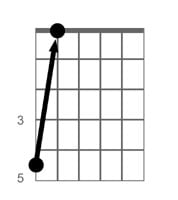 1. Fret the fifth fret of the sixth string, the Low E String (pictured). Play the fifth and sixth string. Match the pitch of the fifth string to the pitch of the sixth string. Listen for a beating or pulsating between the two strings. The faster the beating, the more out of tune it is. Adjust the A string until there is virtually no beating. |
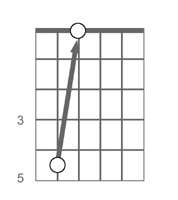 2. Hold the fifth fret of the fifth string, A string. Play the fourth and fifth string. Match the pitch of the fourth string to the pitch of the fifth string. Similar to step 1, listen for the beating/pulsating sound to tune. |
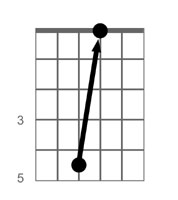 3. Hold the fifth fret of the fourth string, D string. Play the third and fourth string. Match the pitch of the third string to the pitch of the fourth string. |
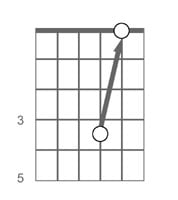 4. Hold the fourth fret of the third string, G string. Play the second and third string. Match the pitch of the second string to the pitch of the third string. |
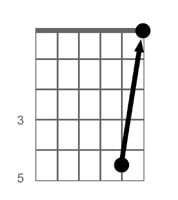 5. Hold the fifth fret of the second string, B string. Play the first and second string. Match the pitch of the first string to the pitch of the second string. |
Fifth Fret Method on a Seven String Guitar
Seven string guitars add a Low B string. It can be tuned by matching the pitch on the fifth fret of the seventh string to the pitch of the open sixth string.
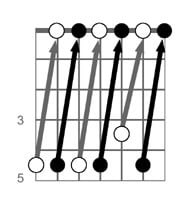
Tuning from a Reference Pitch
Without a properly tuned 6th string, the fifth fret method will not work. To help you get the proper pitches, I’ve included audio for all the strings including the seventh string. You can also purchase a tuning fork, pitch pipe, or use another instrument to provide a reference pitch.
| String Number | Audio |
| 1 (High E) | |
| 2 (B) | |
| 3 (G) | |
| 4 (D) | |
| 5 (A) | |
| 6 (Low E) | |
| 7 (Low B) (if applicable) |


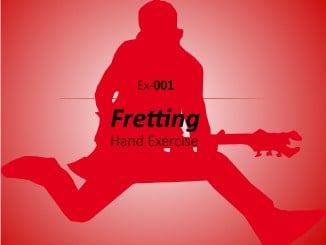

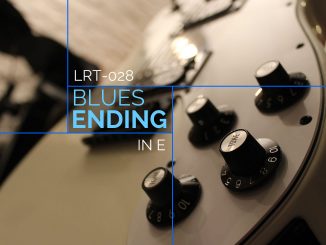
hi thank you for your free guitar lesson ,it helps me a lot to make a module to my student. and i also learn a lot of different guitar technique in your website. thank you so much
Thank you for the kind words!
Thanks for all the information you’ve provided, it has been helpful. I wish it will continue like this and Happy New Year! Though i’m late.. Excuse me.
thank you for the lessons
You’re welcome!
An improvement to the Fifth Fret Method is the ‘Fifth and Seventh Fret Method’. The ‘Fifth Fret’ part is the same as yours above. Here’s the ‘Seventh Fret’ part, which you do immediately after completing the Fifth String Method on the 5th, A, string. Fret the seventh fret of the fifth string. Play the fifth and open sixth strings together. Make sure that the pitch of the fifth string matches the pitch of the open sixth string one octave lower. This is a good check on how accurate you were when you tuned the A string from the low E string. Then, of course, when you’ve tuned the B-string with the 4th string method, you fret the 8th fret on the B-string and check it by playing the open G and the B string together. Tuning is never perfect because equal temperament means “equally out of tune”. So, if you can’t get the fifth fret method and the seventh fret method on a pair of strings to jibe perfectly, get them so that the beating is as slow as possible on them both.
Hi Edwin,
I apologize for the overdue response. This is a great comment. Thank you for adding your expertise. I may add this to the core lesson in the future.
You’ve essentially recommended a check on intonation as you’re playing an octave. I’d also note that other octaves can work too, though a keen ear may be driven crazy trying to balance it out.
As you noted, we are limited by physics and Equal Temperment Tuning is the best we can do “in genearal” except for specific uses. Though this lesson is intended for beginners. Anyone that really wants to geek out on tunings can listen to the Great Courses audiobook “How Music and Math Relate” by David Kung, Ph.D, which I listened to this past summer.
Thanks again for enhancing this lesson.